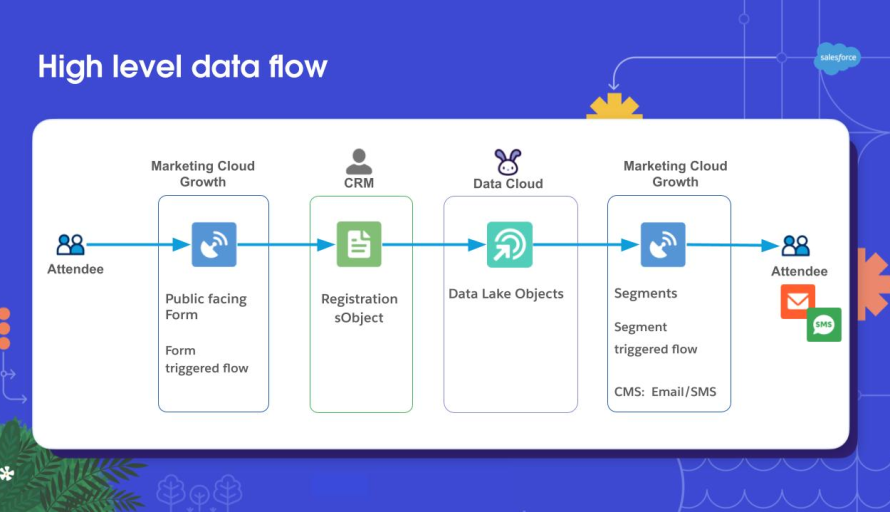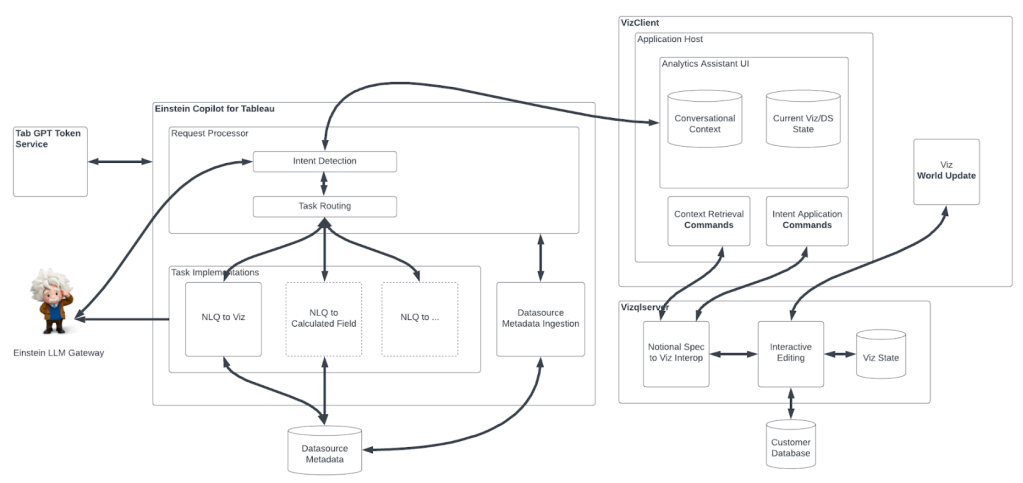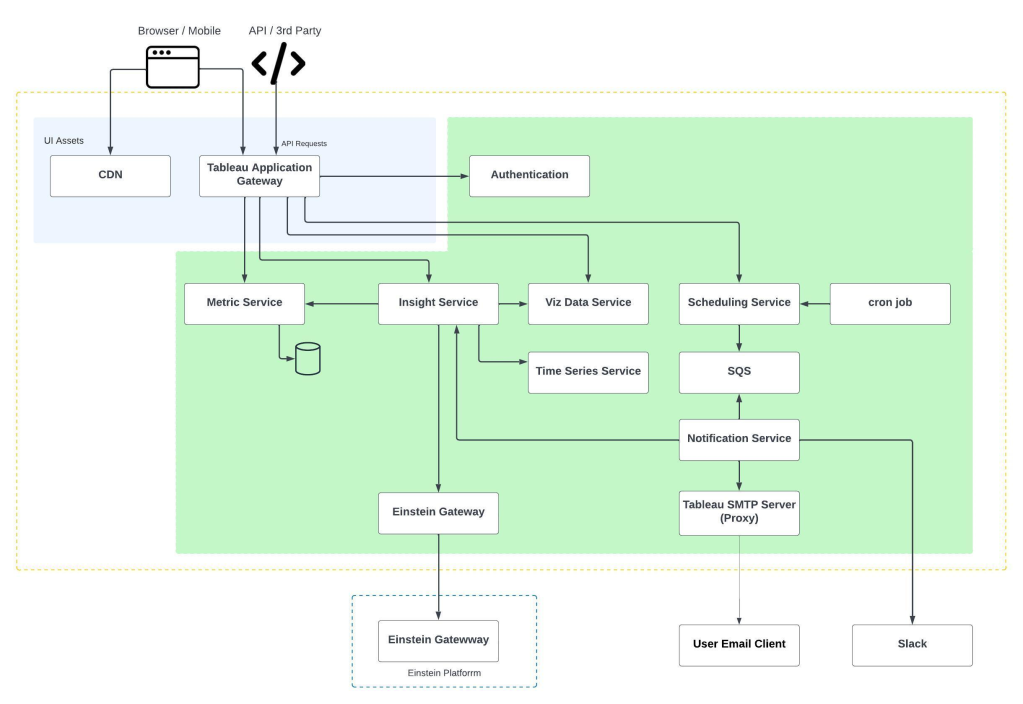
In this edition of our “Engineering Energizers” Q&A series, we spotlight Jeanine Walters, Principal Architect and lead architect behind Marketing Cloud Growth Edition at Salesforce. With over 20 years of architecting innovative solutions at Salesforce, Jeanine has played a pivotal role in creating a game-changing marketing application that empowers small and medium businesses (SMB) with enterprise-level marketing automation capabilities, harnessing Data Cloud and Einstein AI solutions.
Explore how Jeanine and her team navigated complex integrations, aligned conflicting priorities, and addressed scaling challenges to create a seamless and efficient solution that revolutionizes marketing strategies for businesses of all sizes.
At a high level, how do you support Marketing Cloud Growth Edition?
As lead architect for Marketing Cloud Growth Edition, my main goal is to work closely with a team of architects to integrate Salesforce technologies and create a seamless product experience. I also focus on anticipating future needs and collaborating with technology leaders across the company to drive innovation.
In a nutshell, my job is to establish an architecture that supports all the necessary functionality for Marketing Cloud Growth Edition. This means creating a blueprint for the required features and architecture. Our team’s architects then take that blueprint and bring it to life.
Jeanine provides a closer look at how she supports Marketing Cloud Growth Edition.
What new or novel approaches did your team take when tackling the design of Marketing Cloud Growth Edition?
To minimize the need for customers to learn new tools or manage duplicate information, we focused on leveraging existing Salesforce objects and services, such as Sales Cloud Campaigns. This approach also eliminated the need for our team to develop new components from scratch, which helped us meet our delivery deadline.
Before starting the project, we conducted an inventory of available components and identified over 100 existing components that could be utilized. Approximately 75% of our design was comprised of those existing components, although some modifications were made to align them with our specific needs. For instance, we made Flow — which is traditionally used by admins — more suitable for marketers by incorporating it into our product’s campaign management process.
We made an early decision to leverage Data Cloud as the underlying foundation for Marketing Cloud. This enabled us to create a unified view across marketing, sales, service, and commerce — delivering a consistent context and perspective throughout the entire customer relationship journey.
After project kickoff, our team continued to explore collaboration opportunities with other teams to evaluate whether their existing services could meet our requirements.
What key technical challenges did you face during the development of Marketing Cloud Growth Edition?
One of the major hurdles was the complex integration process, unifying existing objects and services. This required the team to navigate uncharted territory and attempt an integration that had never been attempted before.
To overcome this challenge, the team placed a strong emphasis on architectural alignment. They ensured that all stakeholders involved in the development process understood the goals and objectives of the project. However, aligning priorities and timelines across various teams proved to be particularly challenging. Determining which pieces required joint efforts and which could be handled separately was a consistent struggle. The team had to find a way to balance the need for collaborative work with the need for parallel progress.
To address this, the team decided to modify their development approach by minimizing the requirement for alignment on low-level components. For instance, they transitioned from utilizing a unified data kit throughout the project to employing a set of dependent data kits. This modification allows for greater flexibility and efficiency in their development process.

Deep integration with Salesforce DX and Data Cloud gives partners and developers the ability to extend Marketing Cloud Growth Edition.
Can you share an experience when you had to navigate conflicting priorities during development?
We develop our product for both B2B and B2C marketers, so we often have to make choices between which features to prioritize. Our research shows that there are many shared jobs between these personas, so our goal is to ensure that we don’t limit ourselves architecturally and can support both markets in the long run.
Customer feedback is an important factor. If there are areas where some of our customers have provided valuable insights for improvement, we may prioritize addressing those first. Additionally, considering that our product primarily caters to SMBs, which often have a B2B focus, we consider their specific needs. However, we strive to maintain a balanced approach that caters to both B2B and B2C markets, ensuring that we meet the expectations of all our customers.
How do you address challenges of scale when developing the Marketing Cloud Growth Edition?
The ability to support both B2B and B2C customers — including large customers performing high-volume marketing actions in very short amounts of time — is crucial. From the beginning, the focus has been on understanding the scale target needed to meet these demands. Leveraging the knowledge gained from existing B2C products, the team has built services that can support the anticipated scaling of services for SMBs.
To tackle the issues of scale, the team adopts a proactive approach, leveraging Salesforce Flow. For instance, when dealing with processes that are expected to have massive scale, such as running numerous flows, it is essential for these flows to work quickly and handle high volumes.
While the team anticipates that the volume will surpass the current capabilities of Flow, they have addressed this by extending Flow to support higher scale and by implementing additional architectural support. This means that Flow now has the ability to horizontally scale, utilizing available computing resources and increasing compute capability as needed.
Jeanine highlights why engineers should join Salesforce.
What role did customer feedback play in shaping the development of the Marketing Cloud Growth Edition and how did you incorporate it into the project?
Throughout the project, we actively engaged with our customers to understand their needs and preferences. Even before starting the project, we received clear feedback from customers that they desired a unified B2B and B2C experience, tighter integration with other Salesforce products, an enhanced developer experience, sandboxes, and more. These customer requests heavily influenced our initial design.
Once the project was initiated, we continued to collaborate with customers to refine and enhance the design. We conducted multiple rounds of usability testing, customer advisory board sessions, and gathered feedback from various sources. This iterative process ensured that customer input was incorporated at every step of the development process.
To optimize efficiency and respect our customers’ time, we organized focus group testing by batching multiple features together. This approach allowed us to present a comprehensive overview of the features and gather feedback in a meaningful and impactful manner. We typically conducted these sessions once or twice per release to ensure we made the most of our customers’ valuable input.
Learn More
- For a closer look at Marketing Cloud Growth Edition, check out the demo.
- Stay connected — join our Talent Community!
- Check out our Technology and Product teams to learn how you can get involved.






